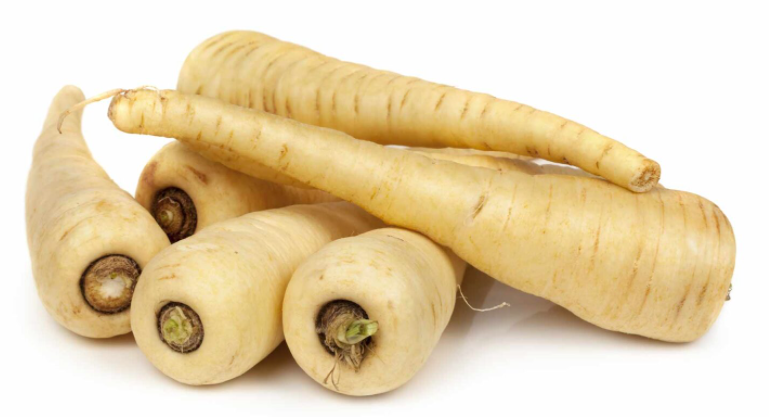Parsnips—This Year’s Star of Thanksgiving
Every year it seems that food writers and publications single out a certain item to consider for our holiday tables. There’s the standard potatoes, brussels sprouts, and green beans, however, this year this year’s must-have side dish has neither the color nor pedigree of your regular Thanksgiving staples.
Closely related to carrot and parsley, all belonging to the flowering plant family Apiaceae, the parsnip is a late fall/winter vegetable. It is not a white carrot, but a completely different species. It’s long taproot with cream-colored skin and flesh which is left in the ground to mature, becoming sweeter in its nutty flavor after winter frosts. We’ll be seeing parsnips all through the winter market.
Parsnips store very well in the refrigerator, for months if needed. They might get limp, but unless they are mushy or slimy they are fine to eat.
Smaller young parsnips don’t need to be peeled, just scrubbed well. Older larger ones are easily skinned with a vegetable peeler.
Sweeter than potatoes, parsnips are packed with vitamins and minerals, but are lower in carbohydrates and can serve as an alternative to mashed potatoes. Unlike potatoes however, parsnips can be eaten raw. The reduced carbs have made parsnips the darlings of the Paleo crowd, but let’s face it, anything roasted in butter, bacon grease, tallow, or duck fat is going to tickle your tastebuds.
Parsnips can also be boiled, steamed, sauteed, roasted, baked, fried, and grilled.
My go-to parsnip recipe is more of a snack—parsnip chips. Shaved thin on a mandolin (watch those fingers!) and tossed with olive oil, I’ll roast up a whole bag on a sheet pan for quick snacks.
Native to Eurasia, this is another vegetable of antiquity eaten by ancient Greeks and Romans. Pre-sugar cane and sugar beets, parsnips were used as a sweetener. It was the French who brought the vegetable to North America. Everyone but the Italians used parsnips in their culinary dishes but leave it to Italy to make wine out of them and feed them to pigs, particularly those used to make Parma ham.
Despite their health benefits and versatility, parsnips have a dark side—woody cores, the sap of the leaves contain a phototoxic chemical that can cause blisters on the skin and they are beloved by a multitude of pests. That’s why you’ll never see parsnips with their tops at the market. Woody cores aren’t much of a problem as they will soften with cooking.
Parsnips are also highly invasive when they escape from their neatly cultivated rows, similar to another fall vegetable that grows sweeter after a frost, sun chokes. Due to sun chokes probability to cause of causing explosive flatulence, they are best avoided at Thanksgiving unless you really want to get back at your relatives.

